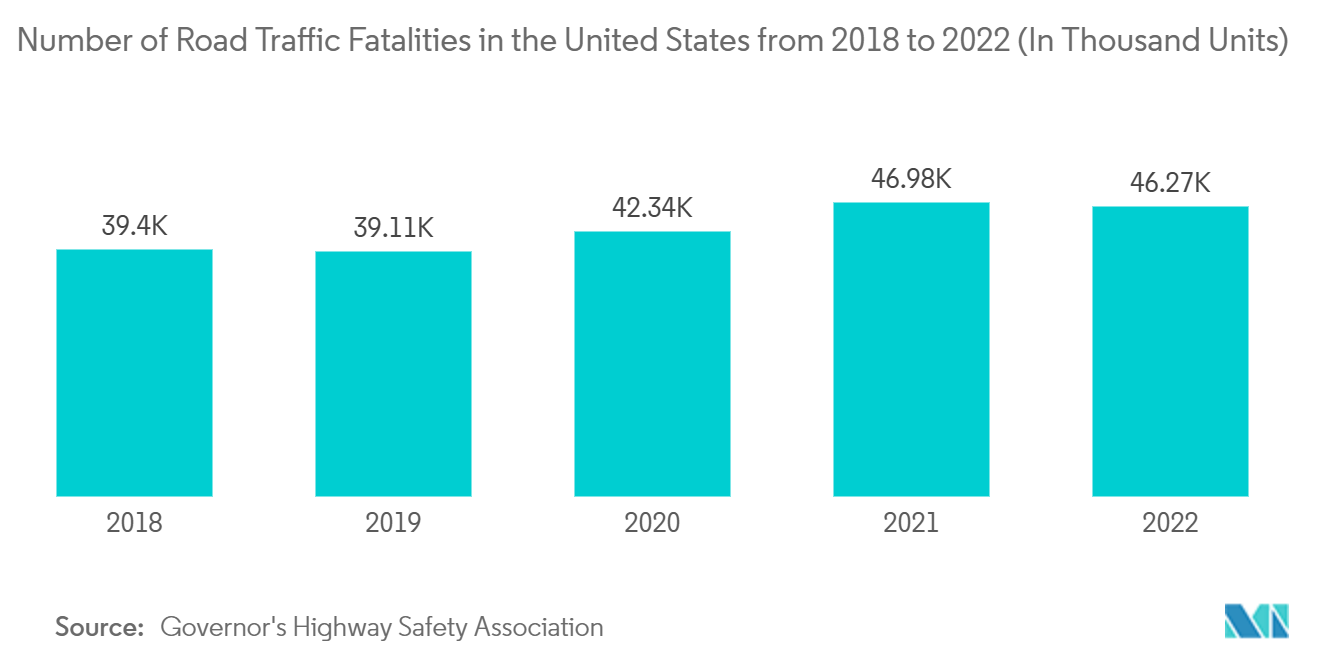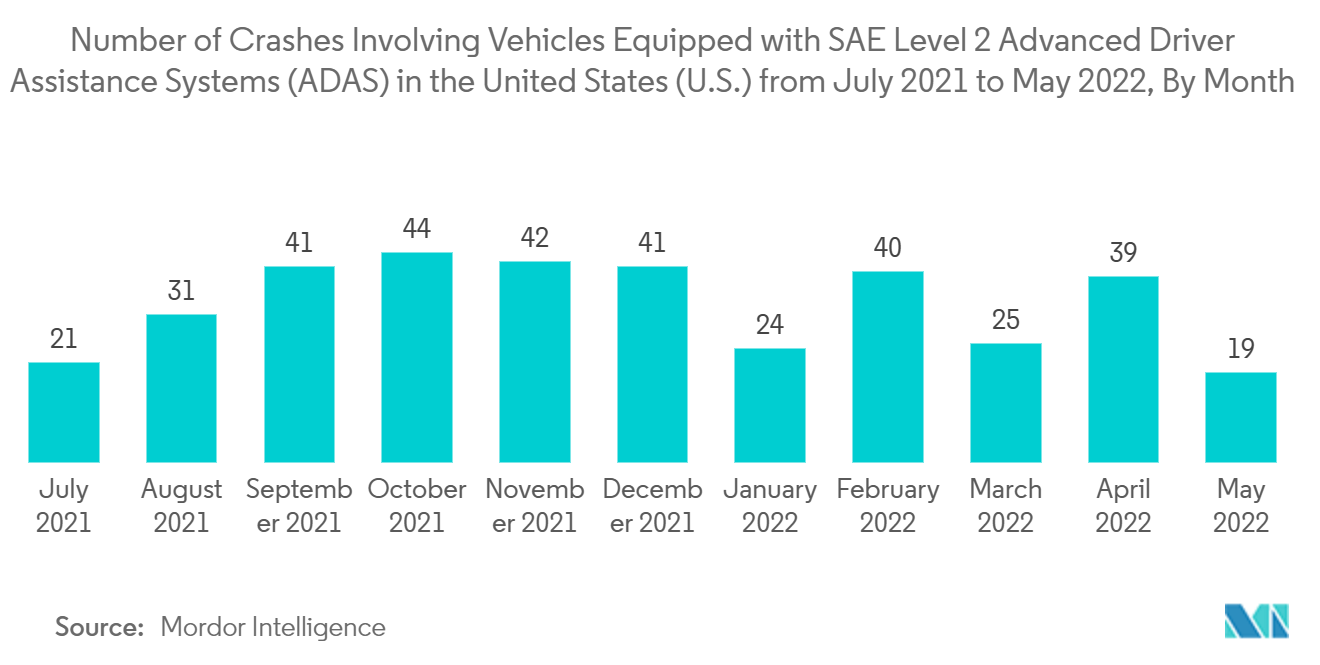Market Trends of North America Pedestrian Detection Systems Industry
Increase in the Number of Road Fatalities
Vehicles in the United States are becoming larger, more aggressive, and more harmful to pedestrians. And it's resulting in near-record pedestrian deaths.
According to the AAA Foundation for Traffic Safety review, ADAS can reduce crashes, injuries, and deaths in passenger vehicles, and it can prevent 40% of all accidents, 37% of injuries, and 29% of deaths. Between the first half of 2019 and 2022, pedestrian fatalities increased by 18%, or 519 extra lives lost. In 2022, there were 1.04 pedestrian fatalities per 100,000 inhabitants in the United States, up from 0.90 in 2019. California, Florida, and Texas accounted for 38% of all pedestrian deaths in the first six months of 2022 while housing 28% of the country's population.
To reduce the fatalities, governments and various companies are introducing new technologies and vehicles with the latest features for enhanced safety of pedestrians. For instance
- In August 2022, In conjunction with ZKW Group GmbH, Cepton, Inc. showcased a lidar integration solution for vehicle headlights. Cepton demonstrated their Nova lidar incorporated into a ZKW heavy-duty truck headlight. Nova offers an unmatched mix of small size, excellent resolution, and improved vertical and horizontal field of view coverage. Its ultra-compact form size enables various seamless integration choices throughout the vehicle to deliver 360-degree perception. This allows the car to identify items in close vicinity, such as pedestrians, bicycles, and road hazards.
Further, federal regulators in the United States are also making efforts to make automobiles safer for individuals who are not inside them. A new rule proposed by the NHTSA (National Highway Traffic Safety Administration) would finally begin grading automobiles on a five-star system for pedestrian collisions. New collision avoidance technology, like as autonomous emergency braking, that has the potential to significantly decrease fatalities and injuries will be tested and, in some circumstances, enforced.

Growing demand for ADAS likely Drive the Market
Passenger cars will be the main contributor to the ADAS mass acceptance in the region, as previously, it is the feature of luxury and high-end cars. Still, major manufacturers are expected to implement ADAS in low-priced cars in the coming years. A consistent increase in the demand for compact and mid-sized automobiles equipped with advanced safety features will ultimately propel the growth of the Pedestrian Detection Systems market.
Apart from automotive tier 1 or tier 2 players, various semiconductors and software companies have entered the ADAS market as modern cars are becoming software-governed rather than driver-governed. Electronic control units, microcontroller units, sensors, cameras, and actuators are the elements that collectively drive modern cars more safely than humans.
Although ADAS technologies are becoming available in new cars, complete penetration into the existing passenger vehicle fleet is expected to take decades. In the previous ten years, the average age of passenger automobiles in the United States has risen by 8%. In the United States, the average age of a passenger car is 12.1 years. Given the quantity of older vehicles on American roads, it will take years for ADAS systems to provide full safety benefits.
According to the Highway Loss Data Institute, by 2026, only two ADAS systems will be present in 50% or more registered vehicles. By 2026, roughly 71% of registered vehicles will have rear cameras, with 60% having rear parking sensors. In comparison, just 13% of registered vehicles are projected to have adaptive headlights by 2026, and only 17% are likely to have adaptive cruise control with lane centering.
Further, Between July 2021 and May 2022, 367 crashes involving Level 2 ADAS-equipped vehicles were reported in the United States. The month of October 2021 had the most recorded crashes, with 44.
Hence, the above-mentioned factors are expected to drive the pedestrian detection market in the region.

